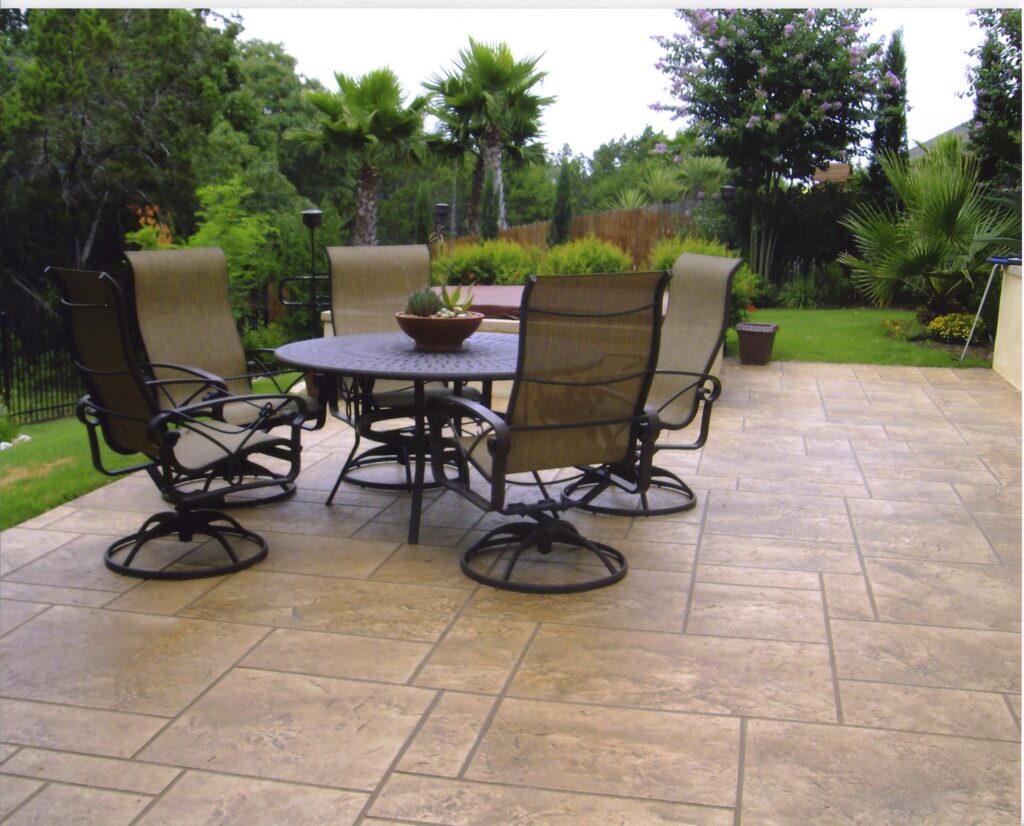
Patio USA: Unveiling the American Outdoor Living Trend
The term “patio USA” encapsulates a significant and evolving aspect of American lifestyle: the embrace of outdoor living spaces. From humble beginnings as simple concrete slabs to elaborate extensions of the home, patios have become integral to the American dream. This article delves into the history, design trends, regional variations, and economic impact of patio USA, offering a comprehensive overview of this prevalent outdoor feature.
A Brief History of the American Patio
The concept of the patio, derived from the Spanish word for courtyard, gained traction in the United States during the early to mid-20th century. Initially, patios were modest, often consisting of a basic concrete slab adjacent to the house. These early patios provided a simple space for outdoor relaxation and recreation. Post-World War II, the rise of suburban development and increased affordability led to a surge in patio construction. Barbecue grills became commonplace, transforming patios into social hubs for family gatherings and neighborhood parties.
Design Trends Shaping Patio USA
Modern patio design in the USA is characterized by a blend of functionality, aesthetics, and sustainability. Key trends include:
- Outdoor Kitchens: Fully equipped outdoor kitchens with built-in grills, refrigerators, and sinks are increasingly popular, enabling seamless outdoor cooking and dining experiences.
- Fire Features: Fire pits and outdoor fireplaces create a cozy ambiance and extend the usability of patios into cooler months.
- Comfortable Seating: Weather-resistant furniture, including plush sofas, sectionals, and dining sets, prioritizes comfort and relaxation.
- Landscaping Integration: Integrating lush landscaping, potted plants, and vertical gardens enhances the visual appeal and creates a natural environment.
- Smart Technology: Incorporating smart lighting, sound systems, and automated climate control systems adds convenience and luxury to patio spaces.
- Covered Patios: Pergolas, awnings, and covered structures provide shade and protection from the elements, increasing the usability of the patio.
Regional Variations in Patio Design
Patio design in the USA varies significantly based on regional climate, architectural styles, and cultural preferences:
Southwest
In the arid Southwest, patios often feature drought-resistant landscaping, shaded seating areas, and adobe-style architecture. Water features like fountains or small pools are common, providing a cooling effect in the desert climate. The use of natural stone and earthy tones blends seamlessly with the surrounding landscape. [See also: Southwest Landscaping Ideas]
Southeast
In the humid Southeast, patios are designed to maximize airflow and provide protection from rain and sun. Screened-in porches and covered patios are prevalent, offering a respite from insects and inclement weather. Tropical plants and vibrant colors add a touch of Southern charm. Outdoor ceiling fans help circulate air and keep the space comfortable.
Northeast
In the Northeast, patios are often smaller in scale due to limited space. Fire pits and outdoor heaters extend the usability of patios into the colder months. The use of durable materials like brick and stone reflects the region’s historic architecture. Container gardens and potted plants add greenery to urban patio spaces.
West Coast
On the West Coast, patios often feature sleek, modern designs with clean lines and minimalist aesthetics. Outdoor kitchens and dining areas are popular, reflecting the region’s focus on healthy living and outdoor entertaining. Ocean views and coastal breezes are often incorporated into the design. Sustainable materials and eco-friendly landscaping are increasingly prioritized. [See also: Sustainable Patio Materials]
The Economic Impact of Patio USA
The patio industry in the USA has a significant economic impact, encompassing construction, landscaping, furniture manufacturing, and retail sales. Homeowners invest substantial amounts in creating and maintaining their patio spaces, driving demand for outdoor products and services. The rise of outdoor living has also fueled the growth of related industries, such as outdoor lighting, sound systems, and smart home technology. Real estate values are often enhanced by well-designed and maintained patios, making them a worthwhile investment for homeowners.
Materials Used in Patio Construction
A wide variety of materials are used in patio construction, each offering unique benefits and aesthetic qualities:
- Concrete: A durable and versatile material that can be stamped, stained, or textured to create various looks.
- Brick: A classic and timeless material that adds warmth and character to patio spaces.
- Stone: Natural stone, such as flagstone, slate, and limestone, provides a rustic and elegant look.
- Pavers: Interlocking pavers offer a wide range of colors, shapes, and patterns, allowing for customized designs.
- Wood: Wood decking provides a warm and inviting surface, but requires regular maintenance to prevent rot and decay.
- Composite Decking: A low-maintenance alternative to wood decking, made from recycled plastic and wood fibers.
Maintaining Your Patio
Proper maintenance is essential for preserving the beauty and functionality of your patio. Regular cleaning, sealing, and repairs can prevent damage from weather, pests, and wear and tear. Power washing can remove dirt and grime, while sealing protects surfaces from stains and moisture. Inspecting and repairing cracks or damage promptly can prevent further deterioration. Winterizing your patio by covering furniture and protecting plants can help them survive the colder months.
The Future of Patio USA
The future of patio USA is likely to be shaped by several factors, including technological advancements, environmental concerns, and changing lifestyle preferences. Smart home technology will continue to play a larger role in patio design, with automated lighting, climate control, and entertainment systems becoming increasingly integrated. Sustainable materials and eco-friendly landscaping will gain further prominence as homeowners seek to reduce their environmental footprint. The trend towards outdoor living is expected to continue, with patios becoming even more integral to the American home. [See also: Future of Outdoor Living Spaces]
In conclusion, patio USA represents a dynamic and evolving aspect of American culture. From simple concrete slabs to elaborate outdoor living spaces, patios have become integral to the American lifestyle, reflecting regional variations, design trends, and economic impacts. As technology advances and lifestyles change, the future of patio design promises to be even more innovative and sustainable, further enhancing the outdoor living experience.
